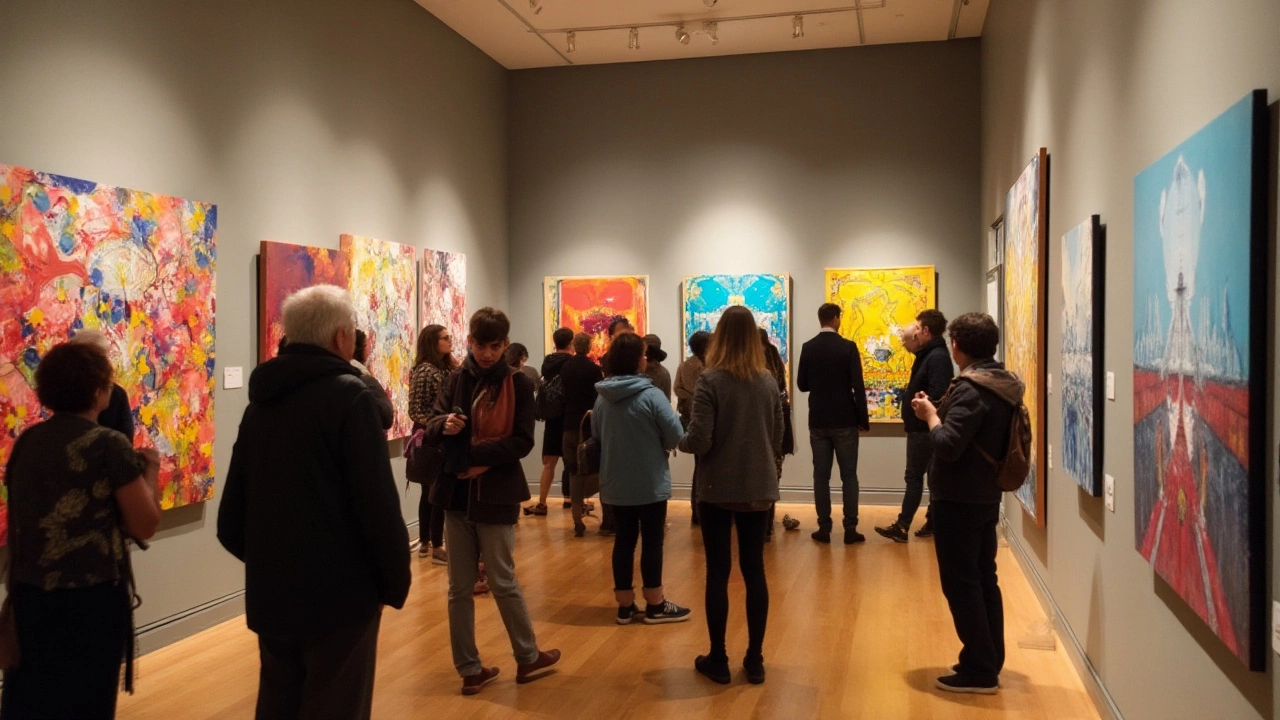Art Principles: Essential Rules Every Artist Should Know
Ever wonder why some paintings grab you instantly while others feel flat? The secret is often simple: they follow solid art principles. These are the invisible rules that guide how we arrange shapes, choose colours, and create depth. Knowing them doesn’t make you a genius overnight, but it gives you a toolbox you can pull from on every project.
Core Principles That Shape Your Work
1. Composition and Balance – Think of a painting as a conversation between elements. If one side is overloaded, the other feels empty and the viewer’s eye keeps jumping back and forth. Use the rule of thirds, a quick grid that divides the canvas into nine equal parts. Place key elements on the intersecting points or along the lines to create a natural flow. Many of our posts, like the guide on the rule of thirds for landscape paintings, show how this simple trick makes scenes feel stable and interesting.
2. Colour Theory – Colour isn’t just about picking pretty shades; it’s a language. Complementary colours (opposites on the colour wheel) create tension, while analogous colours (next to each other) give harmony. When you choose a palette for a landscape, consider the mood you want – warm oranges for sunrise, cool blues for night. Our "Best Colours for Landscape Painting" article walks through how light and weather shift the perfect palette.
3. Perspective and Depth – Without perspective, a scene looks flat. One‑point perspective draws the eye toward a single vanishing point, great for streets or hallways. Two‑point adds depth on both sides, perfect for cityscapes. Even in abstract work, implied depth can be created with overlapping shapes and size variation.
4. Contrast and Emphasis – Contrast isn’t just black vs. white. It’s any difference that makes something stand out – colour, value, texture, or size. Use a bright colour on a muted background to pull focus. Artists often emphasize eyes in portraits because they instantly connect with viewers, a point discussed in the "Eyes in Portraits" post.
5. Rhythm and Repetition – Repeating shapes or lines creates a beat that guides the eye. Too much repetition can feel boring; mix it with variation to keep the rhythm alive.
Applying Principles to Different Mediums
Whether you work in oil, acrylic, watercolor, or sculpture, the same principles apply. For oil painters fixing mistakes, understanding layer transparency (glazing) helps blend corrections without breaking the overall composition. Our "How to Fix Mistakes in Oil Painting" guide explains how to use thin layers to repair a wet or dry mistake while keeping the visual balance intact.
In sculpture, the cheapest materials don’t have to compromise principle. A simple clay bust still needs a well‑thought-out pose and weight distribution – the "Cheapest Materials for Sculpture" article shows how to achieve strong form on a budget.
Digital artists converting sketches to pixels benefit from the same composition rules. The "Turn Traditional Drawings into Digital Art" guide reminds you to keep the rule of thirds in mind when framing your final piece.
Even abstract painters, who often feel free of rules, rely on colour harmony and balance to avoid chaos. The "Abstract Painting: How to Begin" post stresses starting with a limited palette and using rhythm to keep the canvas from exploding.
Bottom line: art principles are not restrictions; they’re shortcuts to making your work feel intentional. Grab one principle at a time, test it in a small sketch, and watch how quickly your confidence grows. Once you’re comfortable, combine several – a balanced composition with strong colour contrast will make any piece pop.
Ready to level up? Pick the principle that feels weakest in your recent work and experiment. The results will speak for themselves, and you’ll start seeing the difference in every new piece you create.

5 Dec 2024
Abstract art is a vibrant expression that breaks away from traditional representation. While it appears formless, some fundamental principles guide its creation, ensuring coherence and expressiveness. This article delves into whether rules exist in abstract art, examining how artists balance structure with creativity. Readers will uncover valuable insights for understanding and appreciating abstract artworks.
Continue reading...
